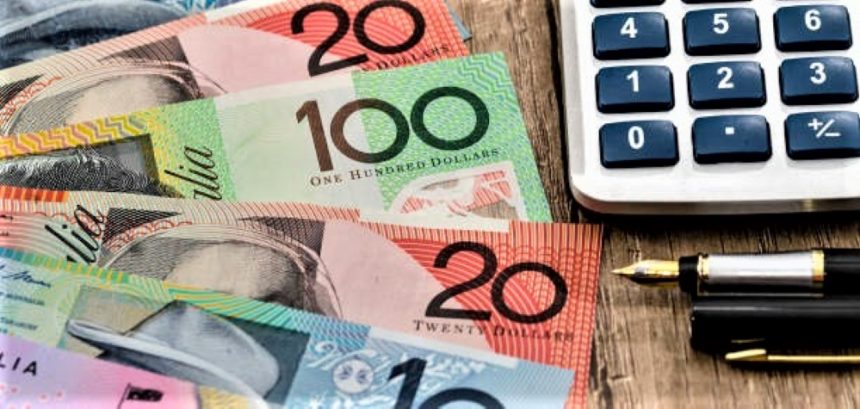The Australian Dollar (AUD) continued its upward trajectory on Wednesday, gaining strength for the fourth consecutive session against the US Dollar (USD). Investors welcomed growing optimism over the progress in US-China trade negotiations, a fresh trade deal between Japan and the United States, and mixed signals from the US Federal Reserve, all of which combined to support risk-sensitive currencies like the Australian Dollar.
Despite a slight deterioration in domestic economic indicators, traders viewed the broader global trade environment and weaker US Dollar fundamentals as more influential drivers of recent Australian Dollar gains. Market participants now eagerly await further updates from trade talks, macroeconomic releases, and central bank statements for clues on the pair’s next move.
Trade Sentiment Fuels Australian Dollar Rally
Markets reacted positively to news that US-China trade talks have gained momentum, with negotiators from both sides reportedly narrowing gaps on several contentious issues. With the August 12 tariff deadline looming, this week’s progress renewed hopes that a deal could be reached to avert new tariffs on hundreds of billions of dollars in trade.
For the Australian Dollar, this development is crucial. China is Australia’s largest trading partner, and any easing of trade tensions between Washington and Beijing is considered a net positive for Australia’s commodity exports, particularly iron ore, coal, and liquefied natural gas (LNG). These goods form a vital part of the Australian economy and are highly sensitive to Chinese industrial demand.
Risk appetite improved across global markets, lifting equities and supporting commodity currencies, including the AUD, NZD, and CAD. Traders turned away from traditional safe-havens like the US Dollar, Swiss Franc, and Gold in favor of high-yielding currencies amid expectations that a more stable trade environment could support global growth.
Trump’s Trade Deal with Japan Alters Market Calculations
On a separate front, US President Donald Trump unveiled a new trade agreement with Japan, one that imposes a 15% tariff on Japanese exports to the United States. As part of the deal, Japan has committed to investing $550 billion in US infrastructure and agreed to open its markets to several key American products.
The agreement is seen by analysts as part of a broader strategy to isolate China, exerting pressure on Beijing to make meaningful concessions in its own negotiations with Washington. The Australian Dollar responded positively, with markets interpreting the deal as a sign of growing multilateral cooperation that may ultimately reduce the risk of full-blown trade fragmentation.
Domestic Data Points to Softness, But Traders Look Through It.
Despite the upbeat international news, recent Australian economic data have shown signs of waning momentum. The Westpac-Melbourne Institute Leading Index, which tracks future economic activity, fell to 0.03% in June, down from 0.11% in May.
This marks the second consecutive monthly decline and reflects
- Slower global demand for commodities
- Declining consumer sentiment
- Fewer hours worked
- Subdued business investment
The indicator signals subdued growth ahead for the Australian economy, likely limiting the upside potential of the Australian Dollar in the medium term unless global conditions significantly improve.
RBA Minutes: Dovish, Yet Patient
The Reserve Bank of Australia (RBA) released the minutes from its latest meeting, reinforcing the central bank’s cautious stance on interest rate cuts. While the RBA acknowledged that further easing is likely warranted over time, the majority of members felt that reducing rates three times in four meetings would not be consistent with a “gradual and measured” approach.
Key takeaways:
The RBA prefers to wait for additional evidence of declining inflation before easing policy further.
The board remains concerned about household debt, weak wage growth, and housing market imbalances.
External trade conditions, particularly China’s demand, remain critical to future policy direction.
The RBA’s tone suggests that while it remains open to further easing, it is not in a rush, especially in light of stabilizing financial conditions and improving trade sentiment globally.
US Dollar Under Pressure Amid Fed Uncertainty
The US Dollar Index (DXY)—which tracks the greenback against a basket of six major currencies—fell to around 97.50, as markets reacted to uncertainty surrounding the Fed’s next policy move. Political controversy and inconsistent messaging from Fed officials contributed to the weaker USD.
Several notable developments included:
Rumors that President Trump might fire Fed Chair Jerome Powell, which were later denied via his Truth Social post.
Congresswoman Anna Paulina Luna accused Powell of perjury regarding Fed building renovations, adding further tension to the Fed’s independence debate.
Fed Governor Adriana Kugler warned that interest rates should remain high to prevent inflation from reaccelerating.
Conversely, Governor Christopher Waller suggested the Fed should cut rates as soon as July, warning of the risks of delaying easing.
This division among policymakers left traders confused about the Fed’s trajectory, leading to volatility in interest rate expectations and downward pressure on the USD.
Consumer Sentiment Surprises to the Upside
Amid the political and policy drama, US economic data provided some relief. The University of Michigan’s preliminary Consumer Sentiment Index for July rose to 61.8, up from 60.7 in June, exceeding analyst expectations of 61.5.
Both the Current Conditions and Expectations components improved, suggesting that US households are gradually regaining confidence despite persistent inflation and elevated interest rates.
While not a game-changer for monetary policy, the data support the case for cautious optimism, reinforcing the Fed’s argument for a balanced approach.
China Stays the Course With Steady Rates
Meanwhile, the People’s Bank of China (PBoC) opted to keep both its one-year and five-year Loan Prime Rates (LPRs) unchanged at 3.00% and 3.50%, respectively. This signals a desire to maintain policy stability while observing the evolution of the US-China trade negotiations.
Chinese Commerce Minister Wang Wentao said that while the two nations have experienced “storms,” economic ties remain essential. He highlighted the Geneva Agreement and London Framework as stabilizing milestones in bilateral relations and reaffirmed China’s commitment to mutual economic benefit.
For Australia, this was an encouraging sign. As the country’s largest export market, a steady Chinese economy is crucial to maintaining Australian growth, particularly in mining and agricultural exports.
Technical View: AUDUSD
Resistance levels: 0.6760, 0.6800
Support levels: 0.6700, 0.6655
Momentum: Bullish in the short term, though RSI is nearing overbought levels.
The AUDUSD pair remains supported above 0.6700, with the next major resistance near 0.6800. A clean break above this level could pave the way toward 0.6850. However, if global sentiment deteriorates or the Fed unexpectedly turns hawkish, the pair may retreat back toward 0.6655.
Conclusion:Can the Rally Sustain?
While short-term sentiment is clearly favoring the Australian Dollar, the medium-term outlook remains mixed. Much will depend on how the following factors unfold:
US-China trade negotiations: A failure to reach a deal before the August 12 deadline could trigger risk aversion.
Fed policy direction: If the Fed surprises markets with a hawkish stance, the USD could regain strength.
Australian economic data: Continued weakness may force the RBA to accelerate easing.
Chinese demand: Sustained strength in China’s industrial sector will be essential to maintain AUD support.
Overall, the bias remains to the upside, but traders are advised to remain cautious and responsive to headlines, especially those related to central bank policy and trade developments.
Disclaimer: This blog is for informational purposes only and does not constitute financial advice. Always conduct your own research and consult a professional advisor before making investment decisions.
[sc_fs_multi_faq headline-0=”h2″ question-0=”Why is the Australian Dollar rising now?” answer-0=”The AUD is gaining due to progress in US-China trade talks, a weaker US Dollar, and positive risk sentiment. Markets expect a more stable trade environment, which benefits Australia’s commodity-driven economy.” image-0=”” headline-1=”h2″ question-1=”How do US-China trade talks affect the AUD?” answer-1=”China is Australia’s biggest trading partner. Positive developments in US-China relations improve China’s economic outlook, which in turn supports demand for Australian exports and boosts the AUD.” image-1=”” headline-2=”h2″ question-2=”What is the RBA’s current stance on interest rates?” answer-2=”The RBA is cautious. While open to more rate cuts, it prefers to wait for clearer signs of falling inflation before acting. The bank wants to maintain a “measured and gradual” approach to easing.” image-2=”” count=”3″ html=”true” css_class=””]









